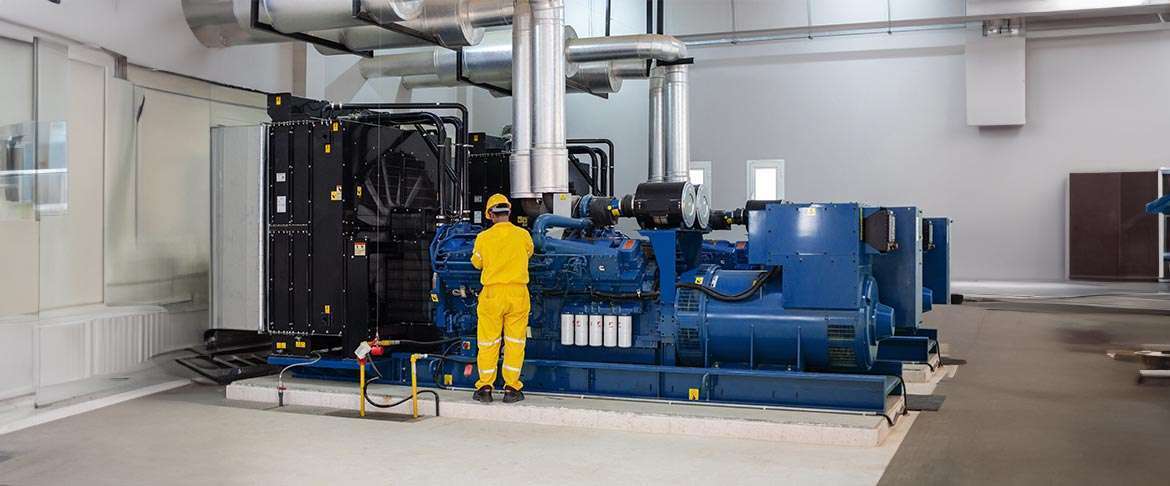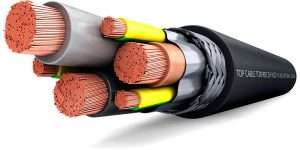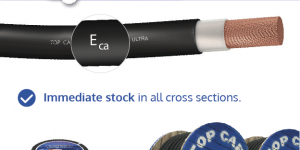VFD or EMC cables have been specially designed for use in installations where it is…
Cables for variable frequency motor drives EMC
In recent years, the use of EMC variable frequency drive motors has been increasing, both in new and existing industries, where they are gradually replacing traditional motor systems.

But while this new technology has great advantages, it does bring with it some drawbacks; these, however, can be mitigated or remedied.
DISTURBANCES CAUSED BY THE USE OF: MOTORS + INVERTERS
Three types of disturbances occur with the use of this equipment:
1. EMISSION OF HARMONIC FREQUENCY CURRENTS INTO THE GRID:
This can be avoided by following the recommendations of the equipment manufacturer.
Depending on the size of the equipment, some of the manufacturers recommend placing harmonic filters on the power supply line, so as not to cause high-frequency disturbances to the network.

2. DAMAGE TO THE MOTOR AND ASSOCIATED DRIVE AS A RESULT OF HIGH FREQUENCY EDDY CURRENTS:
This can be avoided by observing all the rules of the art in the installation.
Damage to the motor and associated drives is the consequence of high-frequency currents inside the motor. The cause of the circulation of high-frequency currents inside the motor is the capacitance imbalance of the motor winding turns with respect to the stator; these imbalances allow the high-frequency currents to close through the stator iron and not continue into the copper winding.

This high-frequency stray current does not return to the inverter via the motor cable but via the shielding or earthing.
The effect is an induced voltage in the rotor which generates a current that follows one of the following paths: 1) rotor – bearing – stator – bearing – rotor or 2) rotor – coupled gears – ground – bearing – rotor.
3. EMISSION OF HIGH FREQUENCY ELECTROMAGNETIC WAVES:
This can be avoided by choosing properly shielded cables, approved cable glands and proper shielding of boards and motors.

Leakage of electromagnetic waves at high frequencies occurs when even small gaps remain in the scree
STANDARD CABLES SATISFYING THE REQUIREMENTS FOR EMC COMPLIANCE (VARIABLE FREQUENCY)
- VARIABLE FREQUENCY POWER AND MOTOR CABLES:
Cable with concentric copper conductor shielding: Copper cable with PVC insulation, concentric copper conductor shielding and PVC outer sheath. Sections from 1.5 mm2 up to 95 mm2.
Cable with corrugated copper tape shield: Copper cables with PVC insulation, longitudinal corrugated copper tape shield and PVC outer sheath. Sections from 1.5 mm2 up to 10 mm2.
Drive-motor connection diagram:

- SIGNAL CABLES:
Cable with tinned copper mesh shield: Tinned copper cables with PVC insulation, twisted in pairs, aluminium-polyester tape shielding and tinned copper mesh, PVC outer sheath, with sections 0.12 to 0.35 mm2, 2 to 24 pairs.
Cable with copper mesh shielding: Copper cables with PVC insulation, twisted to pairs with individual aluminium-polyester shielding and drainage, aluminium-polyester tape shielding and copper mesh with sections 0.5 to 2.5 mm2, 2 to 36 pairs.
- TOPDRIVE VFD ROZ1-K (AS) EMC TOPDRIVE CABLES WITH ELECTROMAGNETIC PROTECTION:
The TOPDRIVE VFD (EMC) ROZ1-K (AS) instrumentation cable manufactured by Top Cable provides the ideal form for data transmission in this type of environment (with variable frequency) offering high mechanical resistance and electro-magnetic compatibility (EMC) due to the 100% shield coverage.
Cable A, DOUBLE SCREEN design (Top Cable brand):
- Cable in 3-phase + 3-symmetrical earth structure
- Screen: Double aluminium-polyester tape shield + tinned copper braid.
- 100% coverage.

Cable B, design LAND / DISPLAY:
- Cable in 3-phase structure + land / screen around the same.
- Land / screen: made up of copper wires in a helical arrangement.
- Coverage: 50%.

More information about TOPDRIVE VFD (EMC) ROZ1-K (AS) can be found here, where the main features and applications of this cable are specified.

TOPDRIVE® ROZ1-K
Flexible EMC LSZH screened cable for Variable Frequency Drive motors




